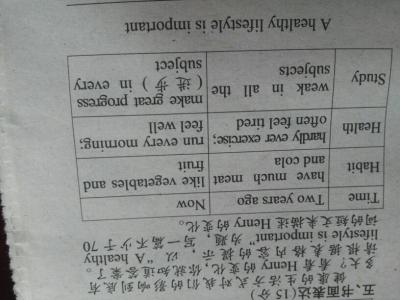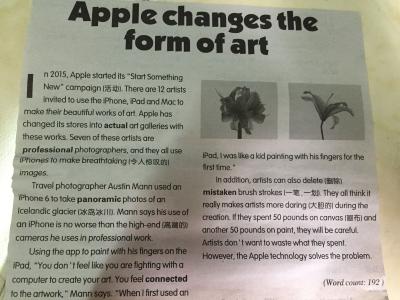英语作为一种与汉语完全不同的语言,有其自身的语言特点。要在非英语语言的环境中学好英语,以背诵的形式来积累语言,是一种行之有效的学习方法。下面是小编带来的适合背诵的英语文章,欢迎阅读!

英文文章背诵1
The first navigational lights in the New World were probably lanterns hung at harbor entrances. The first lighthouse was put up by the Massachusetts Bay Colony in 1716 on Little Brewster Island at the entrance to Boston Harbor. Paid for and maintained by "light dues" levied on ships, the original beacon was blown up in 1776. By then there were only a dozen or so true lighthouses in the colonies. Little over a century later, there were 700 lighthouses. The first light erected on the West Coast in the 1850’s featured the same basic New England design: a Cape Cod dwelling with the tower rising from the center or standing close by. In New England and elsewhere, though, lighthouses reflected a variety of architectural styles. Since most stations in the Northeast were built on rocky eminences, enormous towers were not the rule. Some were made of stone and brick, others of wood or metal. Some stood on pilings or stilts; some were fastened to rock with iron rods. Farther south, from Maryland through the Florida Keys, the coast was low and sandy. It was often necessary to build tall towers there - massive structures like the majestic Cape Hatteras, North Carolina, lighthouse, which was lit in 1870. At 190 feet, it is the tallest brick lighthouse in the country. Notwithstanding differences in appearance and construction, most American lighthouses shared several features: a light, living quarters and sometimes a bell (or later, a foghorn).They also had something else in common: a keeper and, usually, the keeper’s family. The keeper’s essential task was trimming the lantern wick in order to maintain a steady,bright flame. The earliest keepers came from every walk of life -they were seamen,farmers, mechanics, rough mill hands - and appointments were often handed out by local customs commissioners as political plums. After the administration of lighthouses was taken over in 1852 by the United States Lighthouse Board, an agency of the Treasury Department,the keeper corps gradually became highly professional.
在新大陆上,最初的航标灯要算那些挂在港湾入口的提灯了吧。 最初的灯塔是1716 年由马萨诸塞湾殖民地在波士顿港入口一个叫小布罗斯特的岛上建起的。 这最初的灯塔是通过向船只征收"买光钱"来维持运作的,于 1776 年被炸毁。 那时,在各殖民地,真正的灯塔仅有十几个。 但过了一个世纪多一点,灯塔就增至七百多个了。 1850年,在西部沿海建起的首座灯塔基本上沿袭了新英格兰灯塔的设计方案,即那种中心或周围升起塔楼的典型的哥德角式房子。 新英格兰与其它一些地方的灯塔在建筑风格上是多样化的。 在东北部,灯塔大都建在石质的高地上,因此塔身不需要太高。 它们有砖石结构的; 也有木材或金属结构的,有的灯塔建在支架上,有的则用铁条固定在岩石上。 在更南方的地区,从马里兰到弗罗里达礁群的海岸地势低平且多为沙质,因此高大的塔身就很必要了。 例如 1870年在北卡罗来纳的哈特拉角建的宏伟的大灯塔,高达 190 英尺,是全美最高的砖结构灯塔。 虽然美国的灯塔在外观和结构上存在一些差异,但它们确有些共同之处,比如都有灯标、有住房、有时还有钟(后来改用雾角)。 此外,还有一个相同之处,那就是都有守塔人,通常是守塔人全家。 守塔人的基本工作就是修剪灯蕊,以便火焰明亮而稳定。 最早的守塔人来 自各种行业:海员、农民、技工和干粗活的。 这个职位通常是作为政治回报由地方海关官员决定任命。 但在 1852 年后,财政部下属的美国灯塔管理委员会接管了所有灯塔,守塔人这支队伍也逐渐趋向专业化了。
英文文章背诵2Tucked away in our subconscious is an idyllic vision. We see ourselves on a long trip that spans the continent. We are traveling by train. Out the windows, we drink in the passing scene of cars on nearby highways, of children waving at a crossing, of cattle grazing on a distant hillside, of smoke pouring from a power plant, of row upon row of corn and wheat, of flatlands and valleys, of mountains and rolling hillsides, of city skylines and village halls. But uppermost in our minds is the final destination. On a certain day at a certain hour, we will pull into the station. Bands will be playing and flags waving. Once we get there, so many wonderful dreams will come true and the pieces of our lives will fit together like a completed jigsaw puzzle. How restlessly we pace the aisles, damning the minutes for loitering-- waiting, waiting, waiting for the station. “When we reach the station, that will be it!” we cry. “When I’m 18.”; “When I buy a new 450SL Mercedes Benz!”; “When I put the last kid through college.”; “When I paid off the mortgage!”; “When I get a promotion.”; “When I reach the age of retirement, I shall live happily ever after!” Sooner or later, we must realize there is no station, no one place to arrive at once and for all. The true joy of life is the trip. The station is only a dream. It constantly outdistances us. “Relish the moment” is a good motto, especially when coupled with Psalm180: 24: “This is the day which the Lord hath made; we will rejoice and be glad in it.” It isn’t the burdens of today that drive men mad, it is the regrets over yesterday and fear of tomorrow. Regret and fear are twin thieves who rob us of today. So stop pacing the aisles and counting the miles. Instead, climb more mountains, eat more ice cream, go barefoot more often, swim more rivers, watch more sunsets, laugh more, cry less. Life must be lived as we go along. The station will come soon enough.
英文文章背诵3Plant adaptations can be remarkably complex. Certain species of orchids, for instance, imitatefemale bees, other plants look and smell like dead animals, and still others have the appearance of stones. These strange adaptations to life represent just a few of the sophisticated means by which plants enhance their chances of survival. Mimicry in plants or animals is a three part system. There is a model: the animal, plant or substrate being initiated. There is a mimic: the organism that imitates the model. And there is a signal receiver or dupe: the animal that cannot effectively distinguish between the model and the mimic. Mimetic traits may include morphological structures, color patterns, behaviors or other attributes of the mimic that promote its resemblance to a model.That model may be either an unrelated species or an inanimate object, such as the background against which an organism spends most of its time. Mimicry is not an active strategy on the part of an individual plant; flowers do not deliberately trick or deceive animals into visiting them.Mimicry arises as the result of evolution through natural selection and the occurrence of random genetic mutations that lead over many generations to the appearance of favorable characteristics. If such traits help to camouflage a plant, for example, the plant is likely to have a survival advantage over other plants that are less well camouflaged.The plant will leave more descendants, thereby passing the advantage to the next generation. For natural selection to favor the evolution of mimicry, the mimicry must derive a reproductive advantage from modeling itself after another organism or object: its fitness, measured as the number of offspring produced that survive into the next generation, must be increased as the result of deception.
植物的适应性极为复杂。 某种兰花模仿雌蜂,还有些植物看上去或嗅起来象死去的动物,更有些植物具有石头的外表。 这些稀奇古怪的适应性不过是植物的众多求生手段中的一小部分罢了。 动植物的拟态包括三方面的内容:一是被模仿者,动物,植物或是生态基层,二是模仿者,即那些去模拟其它东西的生物,三是上当受骗者,即不能分辨模仿者与被模仿者的动物。 被模仿特征包括形态结构,色彩花纹,动作习性或其它模仿者实现它与被模仿者相似的特点。 被模仿者可以是其它种类的生物或非生命物,如栖居地的环境。 拟态并非某个植物主动的策略。 花朵并非故意诱骗动物来访。 拟态是无数代自然选择和遗传变异的进化而获得的有利特征的结果。 比如,有些特征有利于伪装,那么具有这些特征的植物就比不具有的易于生存。 这种植物就会有更多的后代,并把这些特征代代相传。 要让自然选择惠顾模仿者的进化,模仿者必须在模仿其它生物或物体中得到繁殖优势:它的适应能力,以存活至下一代的幼兽的数目来衡量,必定因为欺骗而加强了。
 爱华网
爱华网



